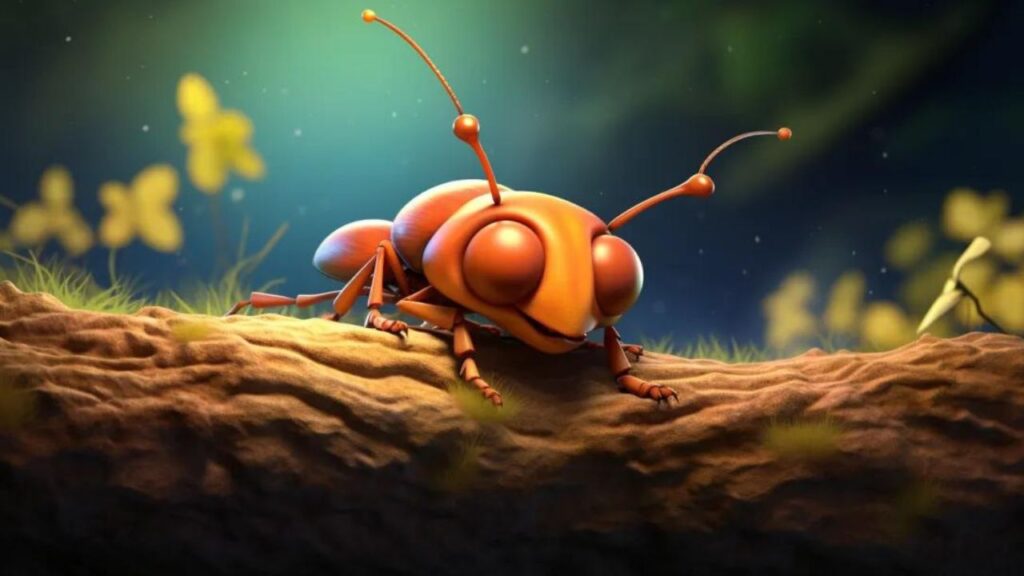TL;DR Summary
Ants don’t hibernate in the traditional sense, but they do experience a state of dormancy known as diapause during winter. As temperatures drop, ants’ metabolic rates decrease, allowing them to conserve energy. They prepare for this period by gathering and storing food, modifying their nests to protect against the cold, and altering their behavior to focus on colony maintenance. During dormancy, they enter a state of torpor, with reduced activity, but can still respond to external stimuli if necessary. As winter ends, ants gradually revive, restocking food supplies and ramping up their activities to ensure the colony’s health and continuation into the new season. Their winter survival strategies, characterized by remarkable adaptability, collective effort, and efficient resource management, offer valuable lessons on resilience and sustainability.
As the seasons turn, the natural world slips into a state of transformation, and among the flurry of changes, ants, too, alter their behavior. Known for their tireless work ethic during warmer months, ants display a remarkable shift as the cold encroaches. This change, a dance with the rhythms of nature, ensures their survival but also raises intriguing questions about their life cycle throughout the year.
Ant Behavior During Seasons
Throughout the spring and summer, ants are models of fervent activity. They forage, build, and expand their colonies. However, as autumn’s chill sets in, a noticeable shift occurs. The once bustling ant highways quieten, and the fervor of their labor subsides. This change in tempo is not accidental but a deliberate adjustment to the looming winter, a prelude to their survival strategy during the harshest of seasons.
Defining Hibernation in Ants
The term ‘hibernation’ in ants isn’t quite the deep sleep that characterizes the winter slumber of bears. Instead, ants enter a state of dormancy known as diapause. During diapause, ants significantly slow down their metabolic activity to conserve energy, a state akin to hibernation that allows them to endure the winter without the need for regular activity or food intake. This period of inactivity is crucial as food becomes scarce and the temperatures plummet to levels that are not conducive to their usual flurry of activity.
The Importance of Winter Survival Strategies
Why do ants need winter survival strategies? The answer lies in the delicate balance of their ecosystem. Winter presents a formidable challenge: food scarcity, freezing temperatures, and the threat of ice and snow. Without a strategy to combat these challenges, an ant colony could easily perish. Their survival through the winter ensures the continuation of the colony into the next year, allowing them to maintain their vital role in the ecosystem, from aerating the soil to preying on pests.
Understanding Ant Dormancy

The shift into dormancy for ants is a sophisticated process, driven by a combination of environmental cues and physiological changes. As a myrmecologist, witnessing the transition of ants from their summer industriousness to winter quiescence is one of nature’s subtle yet profound spectacles.
The Physiology of Ant Dormancy
Ant dormancy, or diapause, involves a suite of physiological changes that prepare these creatures for survival during the winter months. As daylight wanes and temperatures drop, ants’ metabolic rates decrease, conserving their energy. Their bodies undergo a transformation, accumulating glycerol which acts as a natural antifreeze, protecting their cells from the damaging effects of freezing. Hormonal changes also signal a slowdown in activity and development, particularly for larvae and pupae, suspending their growth until conditions become favorable again.
How Temperature Affects Ant Activity
Temperature plays a pivotal role in the life cycle of ants, serving as a key environmental signal for the onset of dormancy. Ants are ectothermic, meaning their body temperature is largely determined by their surroundings. As external temperatures fall, the ants’ body temperatures do as well, triggering a slowdown in their biological processes. This cooling leads to a reduction in their need for food and energy expenditure, effectively setting the stage for their period of inactivity. The colony’s behavior changes from foraging and expansion to focusing inward, conserving resources, and protecting the queen and the brood.
The Difference Between Hibernation and Dormancy
While hibernation and dormancy are often used interchangeably, they describe different survival strategies. Hibernation typically refers to a state of deep sleep in which an animal’s physiological functions reach the lowest ebb to conserve energy. In contrast, dormancy, particularly in ants, is characterized by a state of suspended development and reduced metabolic activity, but not necessarily deep sleep. Ants remain somewhat alert during diapause, able to respond to threats or changes in their environment, although their responses are significantly slowed. This distinction is critical to understanding how ants conserve energy during the winter without becoming completely inert.
Understanding ant dormancy is crucial for appreciating how these creatures have mastered the art of survival across diverse climates and conditions. Their ability to tune their physiology in response to environmental changes is a testament to the resilience and adaptability of ants, enabling them to emerge ready to thrive with the return of spring.
Preparing for Dormancy

As the crisp autumn air signals the approach of winter, ant colonies across the globe commence a series of meticulous preparations. These preparations are critical, transforming the colony from a hub of ceaseless activity into a fortress braced for the stillness of dormancy.
Food Storage and Consumption
In the lead-up to dormancy, food storage and consumption take on heightened significance. Ants become strategic foragers, focusing on accumulating reserves to sustain the colony through winter. They collect seeds, dead insects, and other nutrient-rich resources, which are stored within the nest. The foragers also consume more food, particularly carbohydrates and proteins, to increase their body fat. Inside their bodies, particularly within the social stomach or crop, food is stored not as fat but as consumable reserves that can be shared among colony members, ensuring that even those who do not forage can survive the barren months.
Nest Modifications for Winter
To safeguard against the cold, ants modify their nests, optimizing them for energy conservation and protection. They seal off entry points, reducing airflow and moisture that can lead to a fatal chill. Deep within the earth, some species burrow further below the frost line where temperatures remain stable. They also tighten the nest’s structure, clustering together to retain heat. In leaf-cutter ant colonies, for example, the maintenance of fungus gardens, their primary food source, is paramount, and they adjust the nest’s internal architecture to preserve the optimal conditions for their growth.
Colony Behavior Changes Pre-Dormancy
As dormancy approaches, the behavior of the colony as a whole shifts. The once omnipresent streams of workers outside the nest diminish as the external foraging activities wind down. Internally, the ants’ focus turns to fortifying the nest and caring for the brood and the queen, who is the colony’s lifeline. The ants’ movements become more sluggish, their interactions less frequent. The brood development slows down, and in some species, egg-laying by the queen ceases altogether. This period of reduced activity is not a time of neglect but a strategic conservation of energy and resources, a testament to the ants’ sophisticated survival instincts.
Preparing for dormancy is a complex and vital process for ant colonies. It involves not only the physical preparation of food storage and nest modification but also a behavioral shift that ripples through the colony, affecting each ant’s role. As the last leaves fall and the first frosts threaten, the ants retreat into their nests, ready to endure the winter in a state of collective stasis, a pause in their otherwise unending cycle of labor.
The Hibernation Process in Ants

As the shadows of winter lengthen, ant colonies across the world transition into a state of torpor. This hibernation process is a finely tuned response to the environmental cues of winter, ensuring the survival of the colony through the frigid months.
Entering a State of Torpor
The onset of torpor in ants is a gradual process. Triggered by the decreasing temperature and day length, their metabolic rate begins to slow, conserving energy to an almost standstill. This state of reduced physiological activity is not akin to sleep but rather a deep rest, a period during which ants require minimal food and water. Their movements become sluggish, and the usual hive of activity within the nest subsides to a near halt. The colony’s metabolism synchronizes in this slow-motion state, ensuring that energy expenditure is minimized across the community.
The Role of the Queen and Worker Ants
Within the torpid colony, the queen and worker ants assume distinct roles. The queen, the cornerstone of the colony’s future, is protected and often nestled at the deepest, warmest part of the nest. Worker ants surround her, their bodies forming a living shield that insulates her from the cold. During this time, the queen’s egg production usually stops, conserving her energy for the spring when she will need to lay the foundation of the colony’s next generation. The worker ants, now in a state of dormancy, are poised to reactivate quickly if the temperature warms or a threat invades the nest, displaying a remarkable readiness even in their slowed state.
Variations Among Different Ant Species
The hibernation process in ants can vary significantly between species, influenced by geographic location and habitat. For instance, species in mild climates may experience a less pronounced dormancy, while those in areas with harsh winters enter a deep torpor that lasts several months. Tropical ant species may not hibernate at all but still experience a form of seasonal slowdown in activity. In some desert species, the hibernation-like state can occur during the extreme heat of summer rather than the cold of winter, showcasing the versatility and adaptability of ant species to their environment.
The hibernation process of ants is a remarkable adaptation to the challenges of winter. It highlights not only the resilience of these creatures but also the complexity of their social structure, ensuring that the entire colony, from the queen to the youngest larvae, can survive and emerge ready to resume their roles with the return of spring.
Survival Strategies During Winter

The cold months bring a halt to the relentless buzz of life within an ant colony, but beneath the surface, a quiet battle for survival ensues. Ants have evolved a suite of strategies to endure the winter, from biochemical innovations to collective behavioral adaptations.
Antifreeze Compounds in Ants
One of the most extraordinary survival mechanisms ants have developed is the production of antifreeze compounds. These substances, which include glycerol and other types of alcohols, act to lower the freezing point of bodily fluids, thus preventing ice crystals from forming and damaging their cells. These compounds are a result of both the accumulation of certain sugars and the alteration of fats within their bodies, leading to an increased level of cold-hardiness. This biological antifreeze is a crucial factor that allows ants to withstand temperatures that would otherwise be lethal.
The Colony’s Synchronized Dormancy
Winter survival is a collective effort in an ant colony. As temperatures drop, ants gather in the deeper, warmer parts of the nest, clustering together to conserve heat. This huddle, akin to penguins in the Antarctic, helps maintain a microclimate within the nest that is crucial for survival. The synchronized slowing of their metabolism means that the entire colony enters a state of dormancy together, ensuring that no individual expends energy unnecessarily and that the colony remains as a cohesive unit until the conditions for reactivation are met.
How Ants Wake Up from Dormancy
Emerging from dormancy is as critical a phase as entering it. As the environment warms with the advent of spring, ants gradually begin to increase their metabolic rate. This reawakening is often triggered by the lengthening days and rising temperatures, signaling to the ants that it’s time to resume their activities. The antifreeze compounds gradually dissipate from their bodies, and their energy reserves are mobilized to kick-start their systems. The workers stir first, venturing out to assess the environment and search for food. As the colony becomes active, they tend to the queen and the brood, feeding and caring for them until they too are fully active and the cycle of life within the colony can return to its full, vibrant buzz.
The survival strategies of ants during the winter showcase their incredible resilience and the sophistication of their biological adaptations. From the individual ant’s antifreeze compounds to the collective behavior of the colony, each aspect of their survival strategy is a testament to the remarkable ways in which these insects have adapted to some of the most challenging conditions on Earth.



